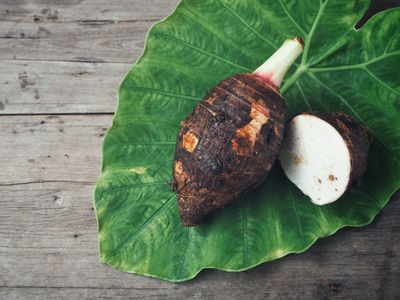About Taro in Planters
Taro is a perennial tropical and subtropical plant, also known as dasheen. It is native to south and southeast Asia but has been cultivated in many other areas, including Hawaii where it has become a dietary staple. The tuber of taro is starchy and a little sweet. You can cook it into a paste known as poi. You can also make flour out of the tuber or fry it to make chips. The leaves are best eaten when young and cooked to eliminate some of the bitterness. Expect taro plants to grow at least 3 feet (1 m.) tall, although they can get up to 6 feet (2 m.) in height. They develop light green, large leaves that are heart-shaped. Each plant will grow one large tuber and several smaller ones.
How to Grow Taro in Planters
Growing taro in a pot is one way to enjoy this attractive plant without a pond or wetlands. Taro grows in water and it needs to be constantly wet, so don’t try to plant it in an area outside that never floods or only floods occasionally; it won’t work. Container grown taro is potentially messy, so be prepared for that if you are growing indoors. Outside, this plant is hardy in zones 9 through 11. A five-gallon bucket is a good choice for holding a taro plant, as there are no drainage holes. Use soil that is rich, adding fertilizer if necessary; taro is a heavy feeder. Fill the bucket with soil nearly to the top. A layer of pebbles or gravel for the last 2 inches (5 cm.) helps to keep mosquitoes at bay. Plant the taro in the soil, add the pebble layer, and then fill the bucket with water. As the water level drops, add more. Your potted taro plants need sun and warmth, so choose its spot carefully. Keep in mind that nurseries often sell only decorative or ornamental taro, so if you want to grow it to eat the tubers, you may need to search online for plants. Expect it to take at least six months for a tuber you can eat to develop. You can also grow a plant from a tuber if you have one, like you would with a potato. Depending on where you live, taro may be considered invasive, so it’s smart to stick to container growing.
